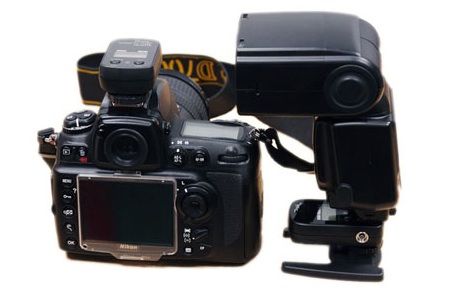
- #Canon 6d trigger flash photox manual#
- #Canon 6d trigger flash photox iso#
- #Canon 6d trigger flash photox series#
The 580EX and 530EX II (see below) add the ability to act as a wireless master, increased power, external power options, more custom functions and stroboscopic operation.
#Canon 6d trigger flash photox manual#
The 420EX can also be used as a slave in wireless flash operation.Ĭanon Speedlite 430EX The replacement for the 420EX, the 430EX adds manual zoom and power control, custom functions, automatic zoomingĬorrection based on image sensor size for current DSLRs, transfer of white balance info to current DSLRs capable of reading it, and LCD readout and faster recycling times. (which often gives a more pleasing result than direct flash), and the zooming head optimizes the flash coverage to the lens field of view from 24mm to 105mm. The tilt and swivel head allow for bounced flash It has a head that tilts, swivels and zooms for example. Much better then the 220EX.įor only a little more money, the 420EX offered significantly more capability than the 380EX. It does not have the capability to be used as a wireless slave. It has a zoom head which can be tilted for bounce flash, but which does not swivel like that on the 420EX. This was the predecessor of the 420EX (see below).

The main advantages of using an external speedlite like the 220EX is that it gives you more power then the built in flash on the 10D/20D/300D/350D, it gets the flash head slightly higher (so may result in slightly less "red-eye") and it saves you from drawing flash power from the DSLR battery. It's a simple speedlite with head that neither tilts, swivels nor zooms. There are also two specialized macro speedlites, the MR-14EX and the MT-24EX.Ĭanon Speedlite 220EX The 220EX is the least expensive and has least features. They all support FP high speed flash sync (at reduced power). They differ both in flash power and in features. They are the 580EX II, the 430EX II and the 220EX (with the 420EX and 550EX discontinued and the 430EX soon to be phased out).
#Canon 6d trigger flash photox series#
TAs of August 2008, there areĬurrently three "EX" series speedlites in production (plus a couple of specialized macro ringlites). "EX" series speedlites do provide the pre-flash which E-TTL (and E-TTL II) metering requires. You can read a bit more about it here - ETTL II
#Canon 6d trigger flash photox iso#
basing the aperture setting on the camera on the guide number of the speedlite, the ISO setting and the subject distance.ĮTTL-II is very similar to E-TTL, except it uses a slightly different algorithm to calculate flash exposure and it can also factor in the distance to the subject when required. They can be used in a fully manual mode, i.e.


Since DSLRs have no film and they are anti-reflection coated, this metering system can't be used and so "EZ" series speedlites are incompatible with auto exposure on Canon EOS DSLRs. "EX" series speedlites allow the use of E-TTL (and E-TTL II) whichĪre flash metering systems which use a preflash and the camera's multi-zone evaluative metering system to determine optimum flash exposure.Įarlier "EZ" series speedlites did not use a pre-flash and determined flash exposure by measuring the amount of light being reflected from the film surface onto special flash exposure sensors during exposure.

DSLRs require newer "EX" Series speedlites in order to provide a reasonable degree of automation and allow automatic exposure. This has been made somewhat worse with the introduction of DSLRs as they are not really compatible with early "EZ" series Speedlites. The Canon speedlite system is a source of confusion to many new (and quite a few old!) Canon EOS users.


 0 kommentar(er)
0 kommentar(er)
